A SYMPHONY IN CONCRETE
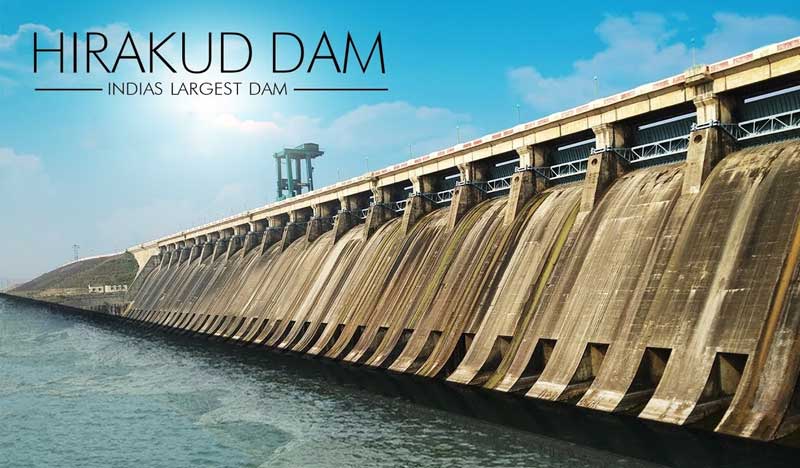
In the verdant heartland of Odisha, India, where the whispers of the Mahanadi River blend with the rustling leaves of ancient forests, a mighty dam stands as a testament to human ingenuity and perseverance. In the realm of human endeavour, few achievements stand as monuments to our audacity and ingenuity like the Hirakud Dam.
As the sun kisses the horizon, casting hues of amber upon its towering silhouette, the dam emerges as a symphony in concrete, orchestrating a dance of resilience and progress against the backdrop of nature’s grandeur. As the waters of the river ebb and flow, so too does the story of this monumental structure, a story woven with threads of ambition, triumph, and the relentless pursuit of progress.
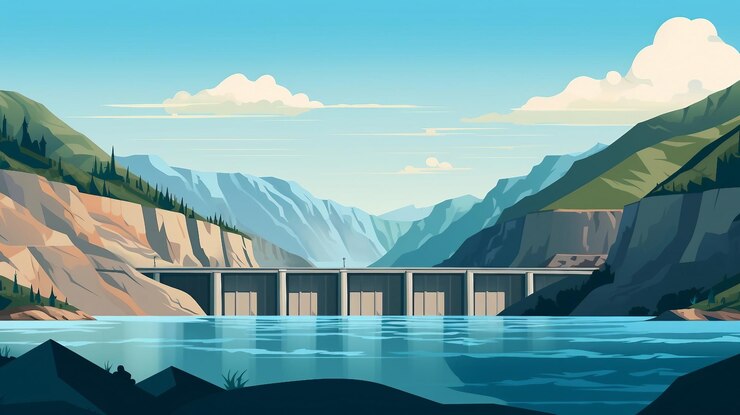
Hirakud is the longest earthen dam in the world and one of the first major multipurpose river valley projects started after India’s independence in 1947. The Dam has an overall length of 4.8 km (3.0 mi), stretching between the Chandili Dunguri hills to the right and Laxmidungri hills onto the left. Incidentally, this also forms the biggest artificial lake in India, with the reservoir holding 743 km2 (287 sq mi) at full capacity and a shoreline of over 639 km (397 mi). Hirakud is a 347.5MW hydro power project.
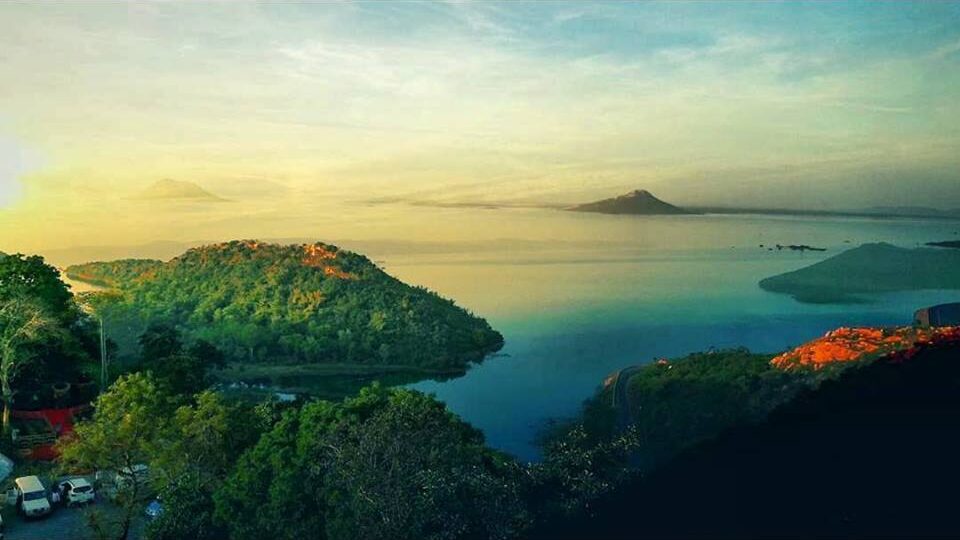
Picture, if you will, the scene: a landscape bathed in the soft hues of dawn, where the silhouette of the Hirakud Dam rises majestically against the canvas of the sky. In its shadow, generations have toiled and triumphed, their labour immortalized in the towering edifice that now commands the horizon. But beyond its formidable walls lies a saga -a saga of dreams and determination, of challenges and conquests, that transcends the boundaries of geography; a symphony in concrete that resonates through the corridors of time.
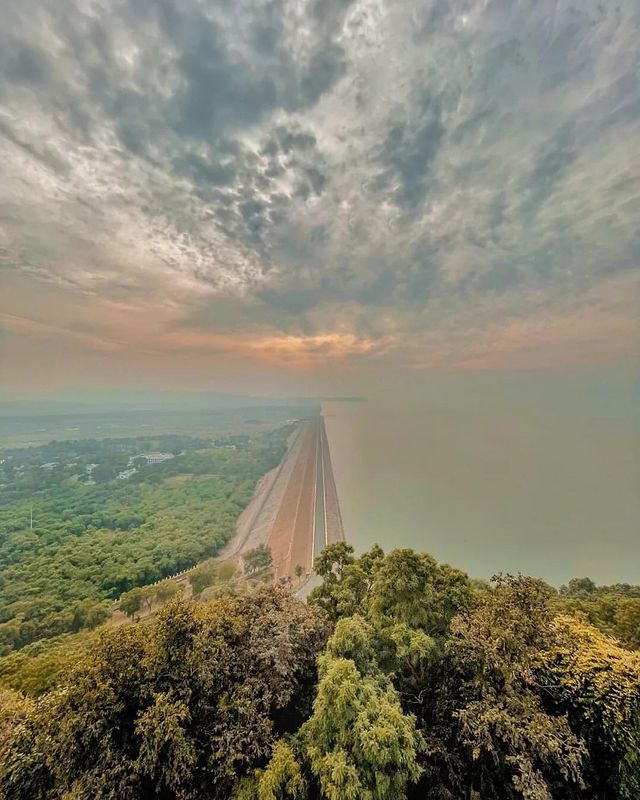
The story of the Hirakud Dam begins in the early 1950s -a time when India’s nascent independence movement echoed with the aspirations of a nation yearning for progress. Inspired by the vision of progress and the need for transformative infrastructure, engineers and visionaries dared to imagine a future where the turbulent waters of the Mahanadi could be tamed, and the bounty of its flow harnessed for the prosperity of the land.
Amidst the fertile plains of the region, plans were drawn, ambitions kindled, and the groundwork laid for what would become one of the world’s largest dams. From the drawing board to the construction site, the journey was fraught with challenges and setbacks. Yet, fuelled by the collective determination to conquer nature’s forces, the dam emerged as a beacon of hope – a testament to the power of human collaboration and determination in the face of seemingly insurmountable odds.
One of the first major multipurpose river valley projects started after India’s independence.
Triumphs and Tribulations
As the sun rose over the horizon, casting its golden rays upon the tranquil waters of the reservoir, the Hirakud Dam stood as a triumph of human ingenuity. With its sprawling expanse and towering edifice, it commanded awe and reverence, a testament to the heights that human endeavor could reach. But beyond its imposing façade lay a legacy that transcended mere engineering – a legacy of progress, prosperity, and the transformative power of collective action.
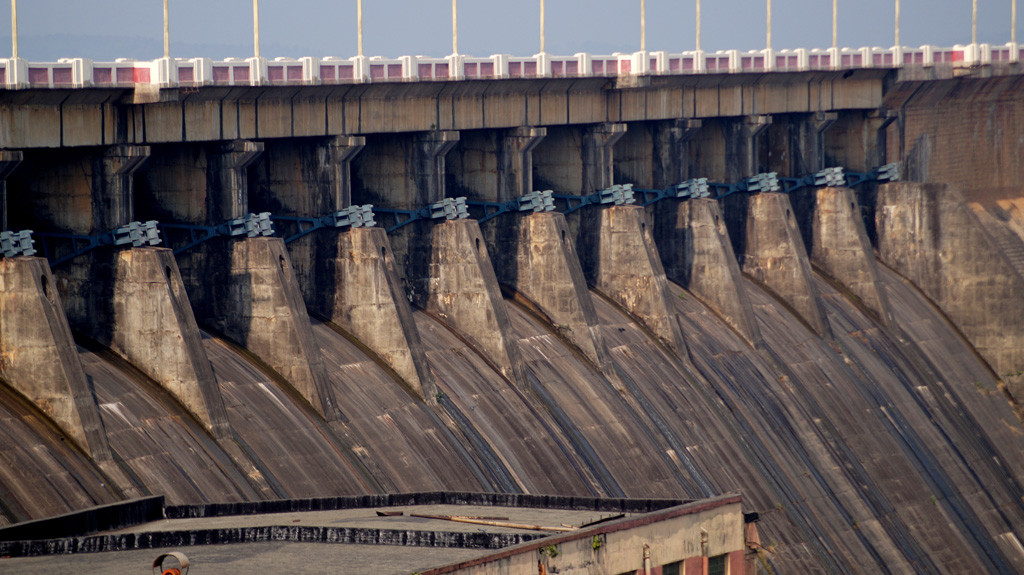
From the verdant fields of agriculture to the bustling corridors of industry, the Hirakud Dam breathed life into the land, nourishing the dreams of millions with its bounty. Its reservoir, a shimmering oasis amidst the arid landscape, became a lifeline for communities, sustaining livelihoods and fostering growth. But perhaps its greatest triumph lay in its ability to unite -a symbol of solidarity and shared purpose in a world often divided by strife and discord.

Legacy
Today, as we stand in the shadow of the Hirakud Dam, we bear witness to its enduring legacy -a legacy etched in the landscape, in the lives of millions, and in the annals of history. From the verdant fields nourished by its waters to the bustling cities powered by its hydroelectricity, its impact reverberates far and wide, shaping the destiny of generations to come.
But even as we celebrate its achievements, we are reminded of the challenges that lie ahead. Climate change, environmental degradation, and socio-economic disparities loom large on the horizon, casting shadows of uncertainty over the future of the region. Yet, in the face of adversity, the spirit of the Hirakud Dam endures -a beacon of hope, a symbol of resilience, and a testament to the enduring power of human ambition.
In the symphony of life, the Dam remains a timeless melody – a testament to the triumph of the human spirit over adversity, and the enduring legacy of our quest for progress.
Exploring the Tourism Potential of Hirakud Dam
Hirakud Dam emerges not only as a marvel of engineering but also as a promising destination for tourists seeking natural beauty, adventure, and cultural immersion. From its sprawling reservoir to the surrounding lush greenery, the dam offers a myriad of experiences that captivate the imagination and rejuvenate the soul.
In 2021, in a bid to boost tourist footfall, the State government of Odisha, India, has launched water sports on the right dyke of Hirakud Dam near Jhankarani temple in Burla. The maiden water sports facility was inaugurated by Odisha Tourism Development Corporation (OTDC).
Water sports like jet ski, speed boat, water scooter, bumper boat, banana boat, kayak, and paddle boat will be available for tourists at the reservoir between 8 am and 6 pm for prices ranging from Rs 100 to Rs 1,500. (source : open media)
Scenic Splendour





The dam’s vast reservoir provides a tranquil setting ideal for leisurely boat rides, offering panoramic views of surrounding hills and forests. Wildlife enthusiasts and birdwatchers can also delight in spotting a variety of avian species, including migratory birds like the pied harrier, red crested pochard, and great crested grebe that flock to the area during the winter months. Additionally, the lush greenery surrounding the dam provides habitat for numerous mammals, reptiles, and amphibians, adding to the allure of the natural landscape.
One can view the whole length of the dam from two observatory towers; ‘Jawahar Minar’ and ‘Gandhi Minar’.
Jawahar Minar
Gandhi Minar
There is a sanctuary (Debrigarh sanctuary) also present at the end of the right dyke. The dam is so huge that only panorama pictures can do justice to it.
One can drive across the dam with prior permission from the Irrigation department. The drive on the dam is very thrilling, when you realize its size and spread. The dam is flanked by 21 km (13 mi) of earthen dykes on both the left and right sides, closing the low saddles beyond the adjoining hills. The dam and dykes together measure 25.8 km (16.0 mi).
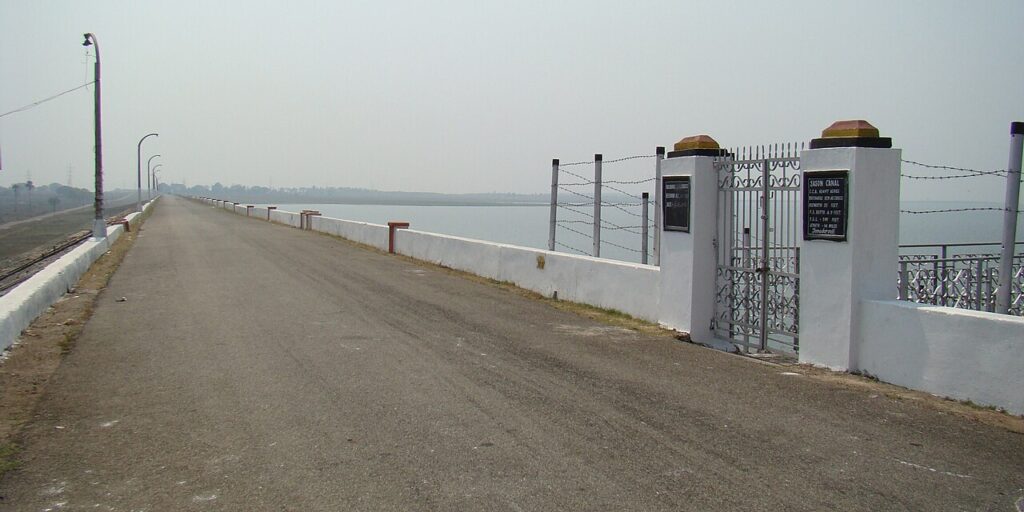
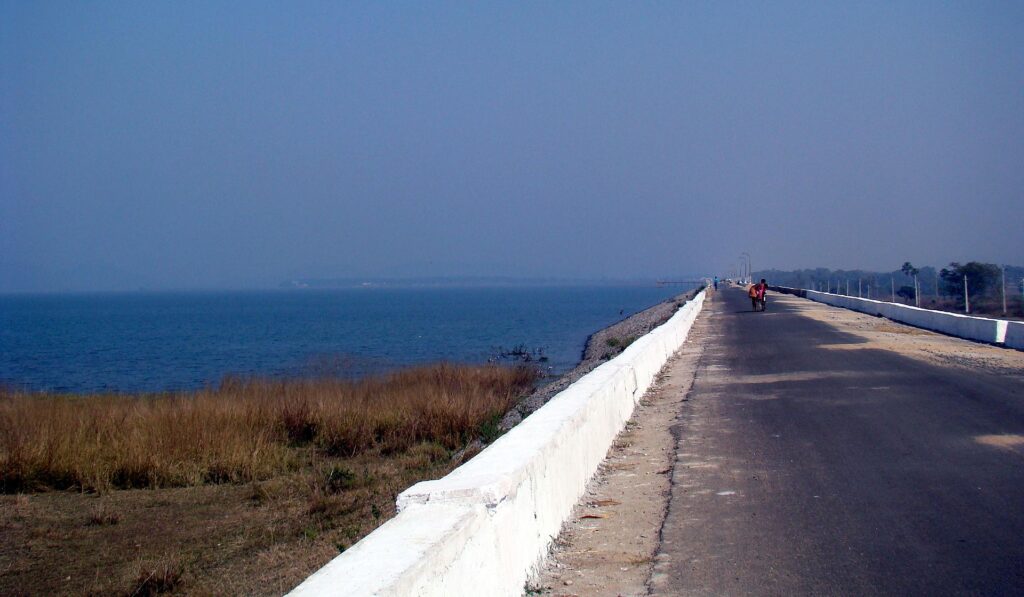
Cultural Heritage and Local Cuisine


In addition to its natural beauty and adventure offerings, the Hirakud Dam also provides insight into the rich cultural heritage of the region. Visitors can explore nearby villages and towns, interacting with local communities and experiencing their traditions, customs, and way of life. From vibrant festivals and folk dances to traditional arts and crafts, the area surrounding the dam offers a glimpse into the vibrant tapestry of Odisha’s cultural landscape.




Moreover, no visit to Hirakud Dam would be complete without sampling the region’s delectable cuisine. From mouth-watering seafood delicacies to aromatic rice dishes and traditional sweets, the local culinary scene is sure to tantalize the taste buds of visitors. Whether enjoying a leisurely meal at a lakeside restaurant or savouring street food delights at a bustling market, the flavours of Odisha are sure to leave a lasting impression.

A commemorative stamp on Hirakud Dam was released on 29 Oct 1979 by the Department of Posts, with denomination 30 paise (0.38¢ US), 3,000,000 stamps issued. A hundred rupee note was issued on 26 December 1960 by RBI Governor H.V.R. Iyengar. On the back side of this note there were thirteen regional languages along with an image of the Hirakud Dam and Hydro-Electric station. This denomination has, however, been discontinued now.

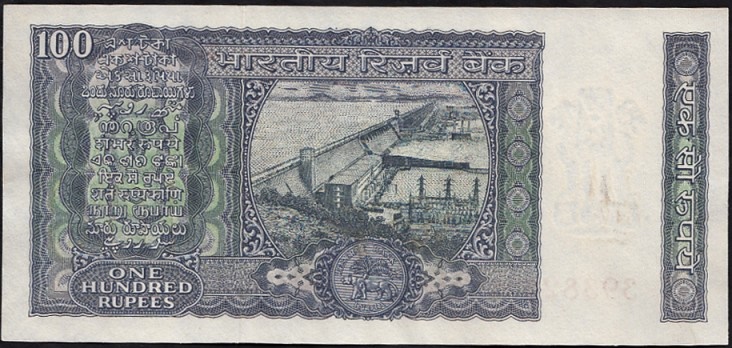
How to Reach
Reaching Hirakud Dam is relatively accessible due to its strategic location in Odisha, India. Here’s how you can reach the dam by different modes of transportation:
By Air: The nearest airport is Biju Patnaik International Airport (BBI) in Bhubaneswar, about 300 kilometers away. From there, take a taxi or bus to Hirakud Dam, a 6-7 hour journey.
By Train: Sambalpur Junction, 15 kilometers from the dam, is the nearest railway station. Trains connect Sambalpur to major cities. From the station, taxis or local buses are available.
By Road: Hirakud Dam is well-connected by roads. Sambalpur serves as a hub. Taxis, auto-rickshaws, or buses are available from Sambalpur to the dam, a 30-45 minute journey. Local transportation options like taxis and auto-rickshaws are readily available for commuting within Sambalpur and to Hirakud Dam.
It’s advisable to check the current transportation options and schedules before planning your trip to ensure a smooth and hassle-free journey to Hirakud Dam.
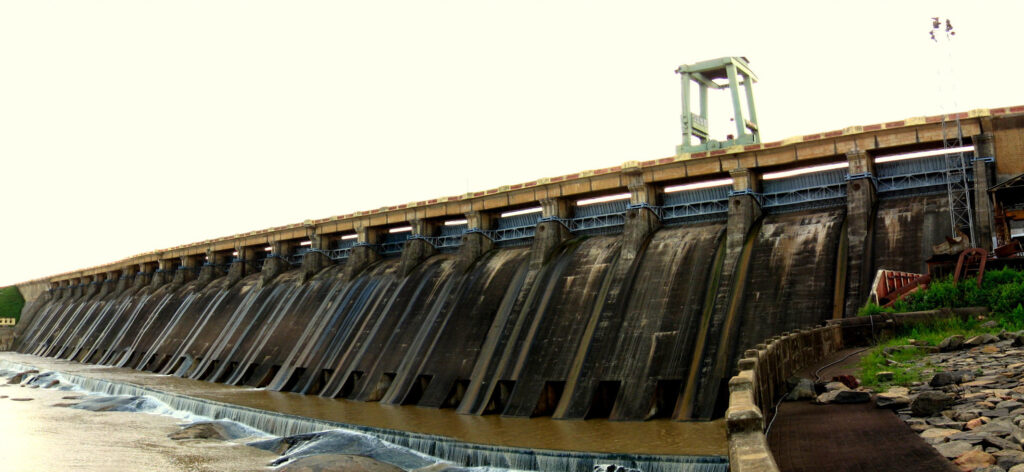
As the sun sets over the horizon, painting the sky in hues of crimson and gold, let us pause to reflect on the journey of the Hirakud Dam—a journey marked by trials and triumphs, by setbacks and successes, but above all, by the indomitable spirit of humanity. May its story inspire us to dream boldly, to strive relentlessly, and to forge a future where progress is not just a destination, but a journey—a journey guided by the timeless principles of perseverance, innovation, and collective action.
The dam stands as a captivating destination for travelers seeking unforgettable experiences amidst the beauty of Odisha’s landscapes.
May its legacy endure for generations to come, inspiring future generations to reach for the stars and carve their destiny amidst the currents of progress.